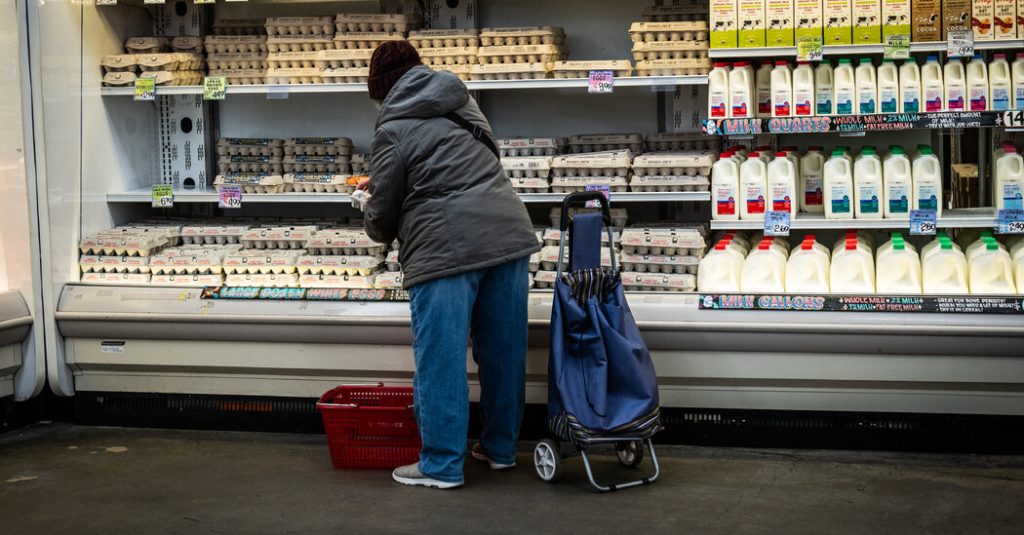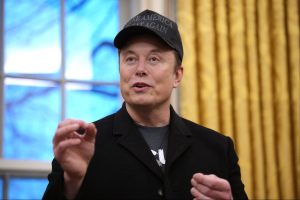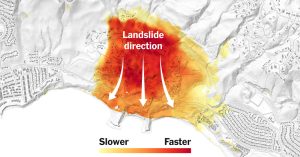As President Trump’s efforts to restructure the global trade system with expansive tariffs begin to take shape, one question continues to dog officials at the Federal Reserve: How will these policies affect the central bank’s plans to lower interest rates?
One influential Fed governor made clear on Monday that he did not expect Mr. Trump’s policies to derail the Fed’s efforts to get inflation under control, suggesting instead that fresh interest rate cuts are still in play this year.
“My base-line view is that any imposition of tariffs will only modestly increase prices and in a nonpersistent manner,” Christopher J. Waller, the official, said in remarks at an event in Australia Monday evening. “So I favor looking through these effects when setting monetary policy to the best of our ability.”
Economists are concerned that tariffs, which are essentially taxes on American consumers, will increase prices in the United States, at least temporarily, and over time slow economic growth.
Mr. Waller acknowledged that the economic impact of the tariffs could be larger than anticipated depending on how they are structured and later put in place. But he suggested that any uptick in prices from tariffs could be blunted by other policies, which could have “positive supply effects and put downward pressure on inflation.”
Mr. Waller’s views matter given that he is one of the seven officials who make up the Board of Governors and votes at every policy meeting.
In addition to tariffs, Mr. Trump has made increased domestic energy production, deregulation and tax cuts pillars of his economic agenda. His administration is also pursuing mass deportations of illegal immigrants as well as government spending cuts by, in part, slashing the federal work force.
Fed officials so far have been hesitant to infer exactly what these changes will mean for the economy and ultimately the path forward for interest rates. Borrowing costs stand at 4.25 percent and 4.5 percent after the Fed opted last month against further cuts until it gained more confidence that inflation was indeed under control.
The last time the central bank had to deal with a prolonged tit-for-tat trade war was in 2018, during Mr. Trump’s first term in the White House. Yet the economic backdrop then could not look more different from today’s.
Inflation was subdued and consistently undershooting the Fed’s 2 percent goal. Interest rates were much lower by comparison, hovering around 2 percent. The outlook for economic growth had also turned gloomy as businesses pulled back their big-ticket investments. This dynamic gave the Fed flexibility to respond pre-emptively to ward off a much bigger slowdown in the United States, and by the end of 2019 it had reduced interest rates by three-quarters of a percentage point.
That “looking through” playbook could hold this time around if concerns about a hit to growth from tariffs overshadow what could just be a temporary rise in consumer prices. But consumers are still feeling the aftereffects of the worst inflation shock in roughly four decades and remain on edge about future price increases, complicating the situation for policymakers.
Fed officials got more unwelcome news on the inflation front last week after the latest Consumer Price Index report showed that price pressures again heated up in January. The main culprits were surging grocery prices, led by a 15 percent jump in egg prices because of the bird flu outbreak, and rising energy costs.
Even once those volatile items were stripped out, so-called core inflation rose at its fastest pace on a monthly basis in roughly two years.
Alarm eased after the release of the Producer Price Index, which tracks what companies pay in goods and services in order to make what they sell. That index suggested that overall inflation, as measured by the Fed’s preferred Personal Consumption Expenditures index, was more subdued than initially feared.
Mr. Waller characterized the data as “mildly disappointing” and said inflation overall was still well above the Fed’s target amid “excruciatingly slow” progress toward that goal over the past year.
But he raised doubts about what signals to draw from the most recent data. Consumer price growth tends to run high at the start of the year before slowing in the second half, which Mr. Waller and other economists think could be attributed to seasonal quirks that may obscure the real pace.
Research from the central bank’s economists shows that this dynamic has occurred in 16 of the last 22 years. In a separate speech on Monday, Patrick Harker, president of the Federal Reserve Bank of Philadelphia, also noted that C.P.I. inflation in January had exceeded expectations nine out of 10 times over the last decade.
“If this wintertime lull in progress is temporary, as it was last year, then further policy easing will be appropriate,” Mr. Waller said in his remarks. “But until that is clear, I favor holding the policy rate steady.”
Michelle Bowman, another Fed governor, affirmed her support on Monday for a “cautious and gradual” approach to additional rate cuts. Ms. Bowman said that while she was waiting for further evidence that inflation was moderating, she still expected that to happen this year. That is a stance most officials at the central bank have adopted to some degree, emboldened by a solid labor market.
Ms. Bowman said she also wanted “clarity” on what the Trump administration had planned.
“It will be very important to have a better sense of these policies, how they will be implemented, and establish greater confidence about how the economy will respond in the coming weeks and months,” she said. Ms. Bowman, like Mr. Waller, was appointed to the Fed by Mr. Trump during his first term.
The president and his staff have adopted a more measured tone when talking about their capacity to tame inflation, after having vowed to vanquish it on “Day 1.”
Kevin Hassett, the director of Mr. Trump’s National Economic Council, told CBS News on Sunday that the administration had a “multifaceted plan to end inflation,” specifically flagging tax cuts, efforts by the billionaire entrepreneur Elon Musk to reduce government spending, deregulation and increased energy production.
Still, investors have scaled back their expectations for how much the Fed will lower rates this year. They have also pushed back the timing of those moves on concerns that taken together, Mr. Trump’s policies will lead to higher inflation. Now, futures markets point to a cut of just one quarter point in December.
Mr. Harker said on Monday that he was “optimistic” not only that inflation would decline over time but that interest rates would “be able to decline over the long run.”
“This does not mean that there aren’t areas of potential concern,” he added. “In fact, the only thing I can say with any certainty is that there are many uncertainties.”








